The survival of the vaquita marina porpoise remains precarious, writes Vanda Felbab-Brown. It is imperative that the Mexican government with the help of environmental NGOs and local communities finally mounts effective enforcement in the Upper Gulf of California, she argues. This piece was originally published by La Reforma’s Mexico Today.
The survival of the marine mammal – the vaquita marina – a porpoise endemic to Mexico’s Gulf of California, remains precarious. Perhaps ten or less of the individuals in the species are still alive, after one died in a fishing net in March 2020. But they exist! Crucial acoustic research in September confirmed that the porpoises are still present. The vaquitas’ extinction would be a tragic finale to decades of struggling to preserve the species; and it would be the first global extinction of a marine mammal in decades – a shameful development should it happen. It is imperative that the Mexican government with the help of environmental NGOs and local communities finally mounts effective enforcement in the Upper Gulf of California this fall – right now, in fact.
The preservation of the species requires dealing with a complex tangle of corrupt authorities, poor local fishermen who fish with illegal fishing gear dangerous to the vaquitas, and criminal groups and outside poachers, many of whom are not poor. The criminal groups and poachers focus on hunting the totoaba, a protected species of croaker fish, also using the gillnets in which the vaquitas perish. Traffickers and Chinese middlemen smuggle the dried totoaba bladder to China where a soup made from its air bladder (known as “money maw”) connotes status and tradition.
Mounting effective law enforcement can be – and has been socially explosive – in the Upper Gulf and requires tackling a wide set of very challenging issues. But concrete and crucial steps, some of which are outlined below, can – and must be – taken. Under pressure of the spring 2020 U.S. embargo on all seafood from the Upper Gulf of California, the Andrés Manuel López Obrador administration enacted sweeping new restrictions on local fishermen at the end of September. But for once, it needs to implement it with determination, diligence, and speed.
For decades, the porpoises, close relatives of but distinct from dolphins, have been killed in the use of gillnets with which fishermen in the Upper Gulf of California like to fish. Anchored to the floor or suspended in the water like gigantic tennis nets, they can be two-kilometers long; and the vaquitas get entangled in them and suffocate within minutes. Efforts to dissuade the Gulf fishers from using the gillnets go back decades and have entailed buybacks of the gillnets, suspension and reissuing of fishing permits, efforts to bring sports fishing or ecotourism to the area, compensation for using alternative fishing gear, community building awareness, and haphazard enforcement measures, as well as prior U.S. embargoes. For various reasons, including the corruption of key regulatory institutions, and meager enforcement and fishers’ resistance, they have failed.
But the situation has become even more dire since 2011 when Chinese traders began organizing massive seasonal poaching sprees for the bladder, capitalizing on the growing affluence of Chinese customers. Totoaba overharvesting a century ago for Chinese (bladder) and U.S. (fillets) markets caused the population to collapse and it was placed on the endangered list, with fishing prohibited. The financial bonanza – with the maw selling in China for as much as $45,000 – attracted both poor fishers to the poaching as well as criminal groups. Although there is some exaggeration and uncertainty about the exact involvement of large Mexican drug cartels in the totoaba poaching and trade, at least some members of Mexican drug cartels, such as of the Sinaloa Cartel, have been involved. And new organized criminal groups have emerged to poach the totoaba and serve as interface with the Chinese traffickers. Sometimes prompted by organized crime groups, fishers from other parts of Mexico have also arrived in the Upper Gulf to poach the totoaba, compounding decades there of lawlessness, the culture of rebellion, the presence of violent criminal groups, the rejection of state authority, and pervasive corruption. In the meantime, neither totoaba poaching nor smuggling to China have been sufficiently disrupted by the coronavirus (COVID-19) pandemic. Enforcement against the import and retail of the illegal bladder in China has significantly slacked from about two years ago, a typical pattern in China of enforcement of environmental regulations weakening over time.
Totoaba poachers aside, about 1,000 pangas (small fishing boats) still head to the Upper Gulf to fish for legal species such as shrimp, but most still use the deadly gillnets. With the shrimping season having started in the Gulf of California on September 25, they are out there again – with a proclivity to use the prohibited gillnets in the habitat of the vaquita. Alternative gear that is not dangerous to the vaquita and other species, such as small trawls and the suripera cast net, exists and has been intensively promoted by the Mexican government and NGOs.
But many of the fishermen reject it, claiming that it produces lesser catch than the gillnet. (On average, that is not the case; but occasionally the gillnets produce a particularly large haul, making the fishers addicted to the lottery-like reward of using the gillnets.) The fishers have also become addicted to the compensation provided for using alternative gear, asking for it repeatedly and learning to game the system. Thus, when hoping to get the U.S. embargo lifted, the new Mexican government regulation strengthened the gillnet ban by requiring fishers to surrender such nets within 60 days and undergo mandatory departure and landing inspections during every fishing trip, fishers’ collectives immediately went public with threats of a lawsuit and appeals for compensation.
Prior efforts to seize the gillnets – on the sea, led by the international NGO Sea Shepherd Conservation Society that has removed thousands of kilometers of the gillnets from the waters, and by Mexican authorities — have sometimes been met by violent resistance by the fishers. Sea Shepherd vessels have been attacked, as have Mexican fishery authorities’ and Navy (SEMAR) facilities. In March 2019, angry fishermen torched port facilities after a totoaba poacher was shot in a confrontation with Navy soldiers. Fishers are also evading regulations in other ways: last year, for example, they falsely claimed that much of their shrimp and other catch was obtained with the suripera and other permitted gear; and Mexican law enforcement authorities failing to detect and investigate such deception. This year, they need to be primed for such deception, for the shrimping season is under way, as are various forms of evasion of the regulations.
What are the most important measures to be taken now – in the fall and heading into the winter-spring totoaba poaching season?
First, the Mexican government must not be satisfied merely with passing the new regulations. It has until October 30 to develop its enforcement and implementation plan, and ideally should do it sooner. The international Vaquita Enforcement Study Group, composed of international and Mexican NGOs with years of work in the Upper Gulf under their belt, presented the Mexican government with an excellent set of recommendations. They are similar to those put forth by the Environmental Defense Fund, also a member of the Enforcement Group. Both have informed and are reflected in my priority recommendations here.
Second, the U.S. embargo should not be lifted until meaningful enforcement of the new regulation is consistently implemented.
Third, enforcement needs to continually center on preventing the entry of boats and gillnets from the protected areas of the vaquita, particularly the Zero Tolerance Area, a small subset of the vaquita refuge where vaquita sightings have been most frequent. SEMAR, now in charge of the vaquita-totoaba enforcement (and soon likely to be in charge of all fisheries enforcement) should concentrate its vessels there and make sure that this area is monitored 24/7 with no breaches allowed. This includes removing gillnets from the water in the larger Gillnet Exclusion Zone – and protecting Sea Shepherd and the Mexican fishers who fish legally, comply with regulations, and participate in the Ghost Net Removal program. In the tight-knit communities of San Felipe and Santa Clara, people know who poaches and who assists authorities with enforcement, and the latter fishers and their families are vulnerable to attack and intimidation by poachers and totoaba-poaching criminal groups.
Enforcement action needs to be taken both on land and on water. All gillnets, and the pangas of repeated violators, should be seized. Not only should all boats in the protected zone should be inspected before they leave port and when they return, but the authorities must close illegal launching points which are already being used by fishermen intent on using gillnets.
Frequent violators should be fined at escalating rates, and their leaders as well as members of organized criminal groups arrested. Boat and catch seizures, arrests and escalating fines are all already enabled by Mexican laws and regulations but authorities have not had the will to apply them. Strict adherence to human rights and civil liberties in these essential enforcement actions is key (although characteristically violated in Mexico).
Fourth, to facilitate much more effective intelligence-led enforcement, Mexican authorities must restart the use of technological tracking systems that all boats in the area including pangas are mandated to use. The automated identification system (AIS) and Pelagic Data Systems provide actionable intelligence on not only where each boat is both on the seas and on land, but also (through patterns of movement analysis) on what gear the fishing boat is using, differentiating legal fishers from illegal ones. Yet last year, Mexican authorities did not follow up on this intelligence on the sea or land. And this year, the Mexican government has not been able to find the $300,000 necessary for the systems to even run. The money needs to be raised immediately and the resulting intelligence diligently followed up and shared with enforcement partners and stakeholders for transparency and effectiveness. Not finding the meager amount of resources for such a vital system is simply inexcusable. And the data need to be made public to help promote sustainable vaquita-friendly fisheries.
Fifth, the institutional buckpassing among SEMAR, the National Commission for Aquaculture and Fisheries (CONAPESCA), and other institutional authorities that has eviscerated regulations in the Gulf for decades must be overcome. Is it time for López Obrador — eager to get the embargo lifted since it is causing real hardship to the Gulf fishermen and their families already hammered by the Covid-19 economic downturn — to appoint a coordinating tzar for the Upper Gulf?
And sixth, serious enforcement actions against the organized crime of totoaba poaching are urgently needed. The Mexican government has reportedly gathered a substantial amount of intelligence; so prosecution finally needs to be initiated and maintained. All the more important, before the intensified totoaba poaching starts in the spring. For enforcement to develop deterrence capacity, it needs to be frequent and certain, not only to come with stiff penalties.
Such enforcement is critical. But it cannot take place in isolation. Both the Mexican government and Mexican and international NGOs need to continually engage with the fishing communities in the Upper Gulf of California to hear their views and seek to find ways to positively induce more of them to collaborate in the rescue of the perhaps world’s most imperiled animal, their own vaquita marina.
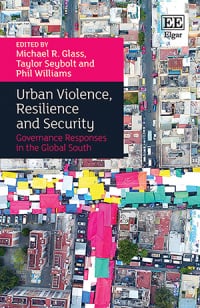
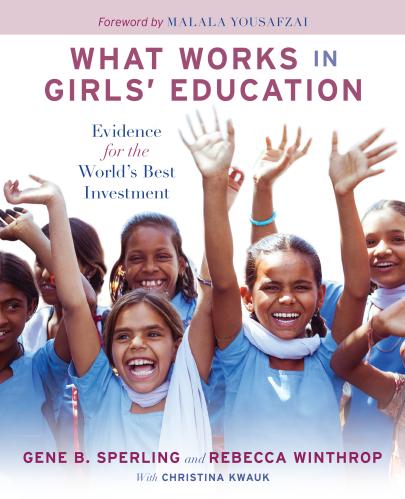

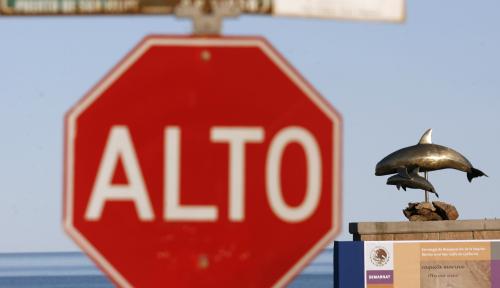
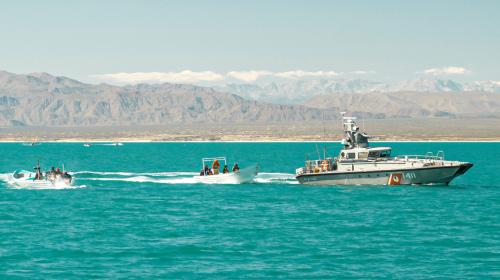
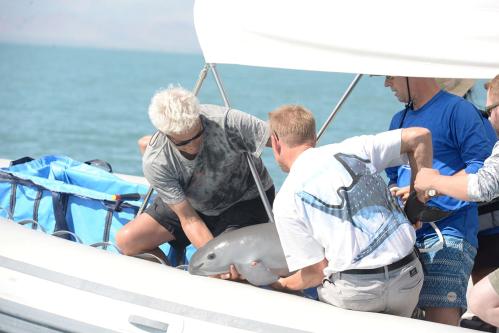

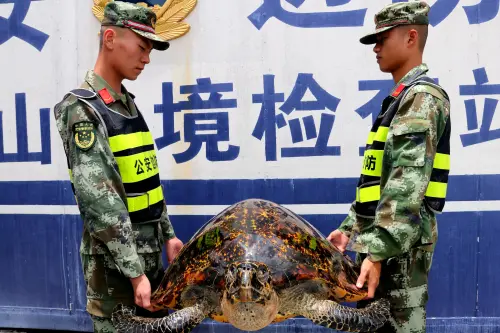
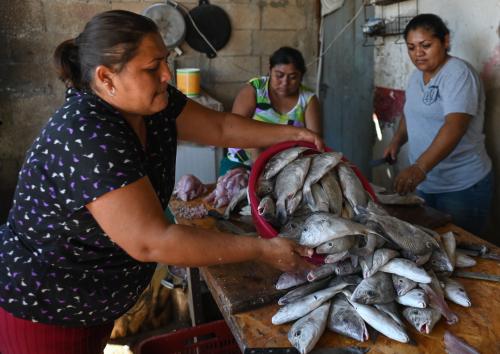
Commentary
Saving the vaquita marina and the urgency of this fall
October 12, 2020